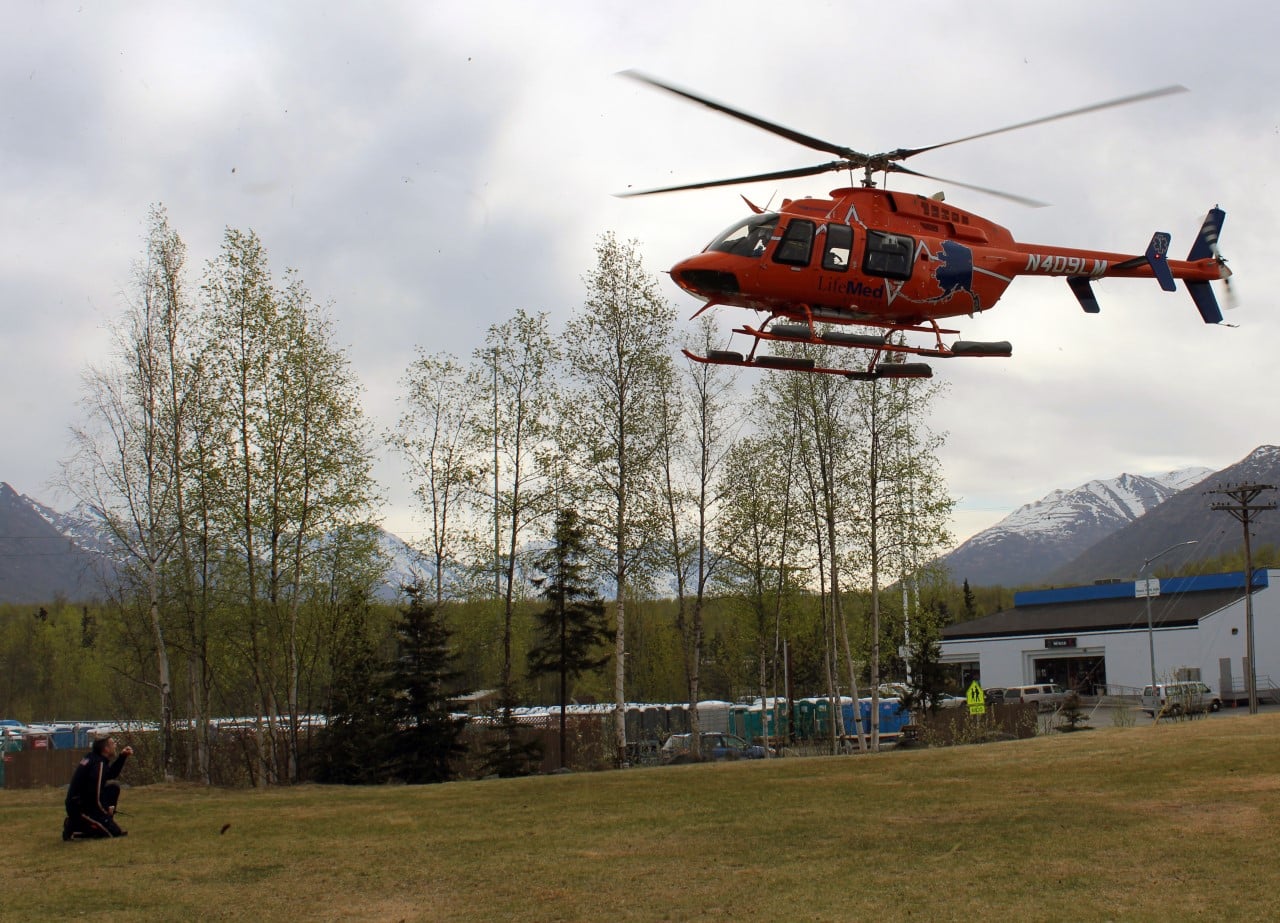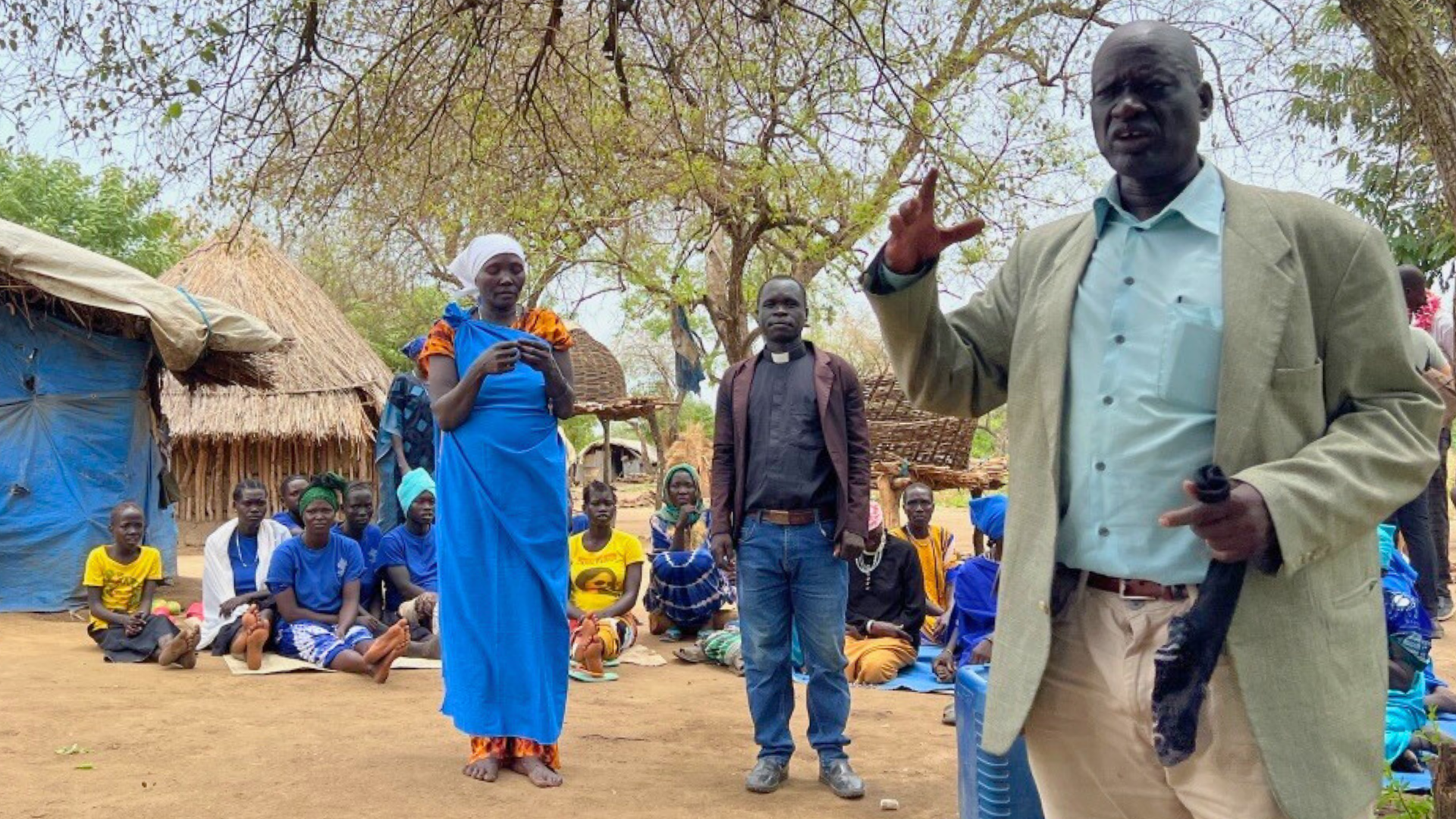
By Mary Rall
EAGLE RIVER, AK (May 15, 2017) — The LifeMed Alaska red rescue helicopter lightly touched down behind Community Covenant Church on Saturday, but it was not there to transport someone to a hospital. Instead, it was there as part of Disaster Day: Preparing Together, which the church hosted.
State, municipal, and military emergency support organizations made presentations at the emergency preparedness event, which was the first-ever in Eagle River. About 100 residents attended, said Ted Smith, event organizer and emergency preparedness manager with the Alaska Native Tribal Health Consortium.
“We want to make sure the community has the awareness necessary to get the help they need during an event or disaster,” Smith said. “You need to be able to be independent and on your own for three to seven days.”
Smith said emergency response and government organizations are apt to be overwhelmed during an extreme crisis or a natural disaster and may not be able to help everyone in need of aid right away. “The more prepared you are for you and your family, the better chance you have to make it through those three to seven days before emergency resources may become available,” he said.
A natural disaster could cause resources such as natural gas distribution systems to go offline for an extended period of time, making it imperative for individuals and families to be able to meet their own needs until services are restored, said Senior Captain Mike Murphy with Anchorage Fire Department Station 11 in Eagle River.
Presenters also highlighted the way state and federal emergency managers cooperate to support the community. “No one has it all. We need to complement each other,” said Master Sgt. Kelly Rathbun, Department of Emergency Management Plans noncommissioned officer in charge with Joint Base Elmendorf-Richardson’s 773d Civil Engineer Squadron.

Rathbun and other 773d CES airmen explained how residents can build emergency preparedness kits.
“We always tell people they should have three types of kits,” Rathbun said. The first should be an extensive home kit that includes items such as food, water, and medications sufficient to supply the entire household for several days.
Smaller kits should also be created for family vehicles, she said, and ought to include things like jumper cables and flashlights, as well as some of the same provisions in a home kit.
The third kit is reserved for pet owners, Rathbun said, noting that items such as pet medications, leashes, and pet food may help ensure the needs of domestic animals are met during an emergency.
In addition to preparedness resources, the event featured interactive displays, an AFD fire truck, a LifeMed Alaska medical evacuation helicopter, and an earthquake simulator from the State of Alaska Division of Homeland Security and Emergency Management.
Joyce Guest of Eagle River was one of many who braved the simulator, which imitates the impact of a magnitude 5.5 quake. “It’s really jolting and made me think that I need to secure some things and my bookcases,” Guest said. “It’s very realistic and gets you thinking.”
Smith said Disaster Day: Preparing Together will become an annual event to help the community become progressively more aware and better prepared. Until then, Smith said additional disaster preparedness information and resources are available online at ready.alaska.gov, ready.gov, beready.af.mil, and www.acsim.army.mil/readyarmy.














